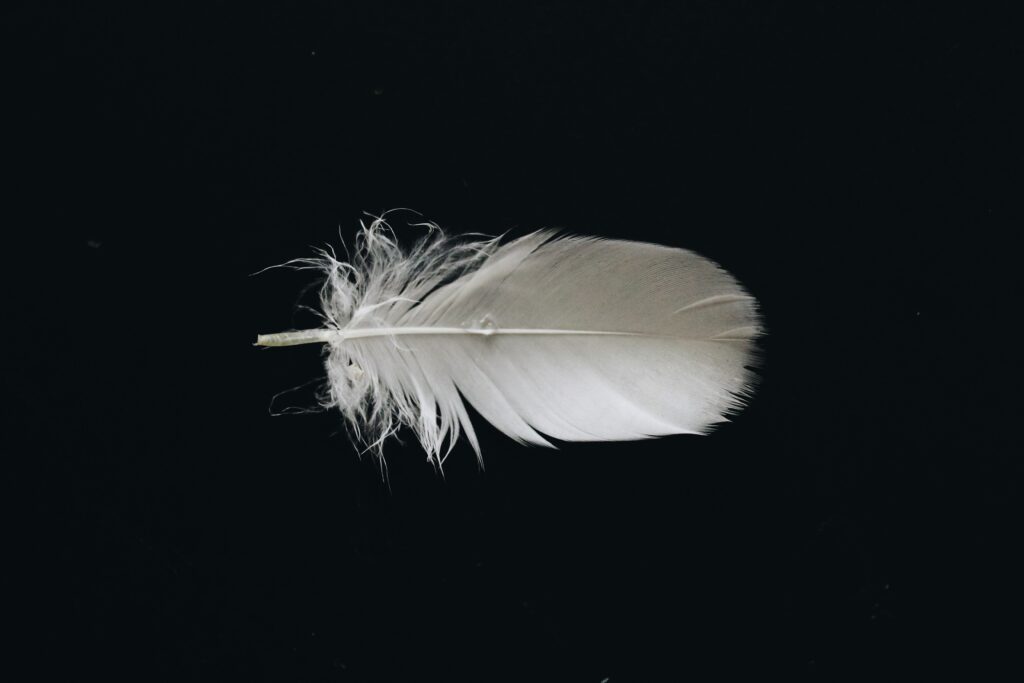
Introduction
Unique to birds, feathers come in all different kinds of shapes, sizes and colors. When it comes to the avian residents at your animal organization, observing feathers carefully can be a helpful way to get a quick insight into a resident’s overall health! This resource is meant to offer you an introduction to the basic biology of feathers, how birds molt, and some things to look out for when it comes to the daily observation of your avian residents.
The Anatomy Of A Feather
Bird feathers have evolved in many diverse ways to serve different functions, depending on the needs of the bird wearing them. These functions include flight, thermal insulation, adding buoyancy in water, waterproofing, camouflaging, communication, and protection!
Despite their diversity, all bird feathers have certain things in common. They are composed of a protein known as beta-keratin, formed into a branching structure to form feathers.
The rachis or shaft is a tough tube that serves as the “trunk” of the branching structure, extending through the length of the feather. The base of the rachis is commonly hollow and is known as the calaumus or quill. From the rachis extend long thin fiber-like barbs, which are like the branches of a tree. From the barbs extend smaller, finer fibers, known as barbules, which link the barbs together like velcro.
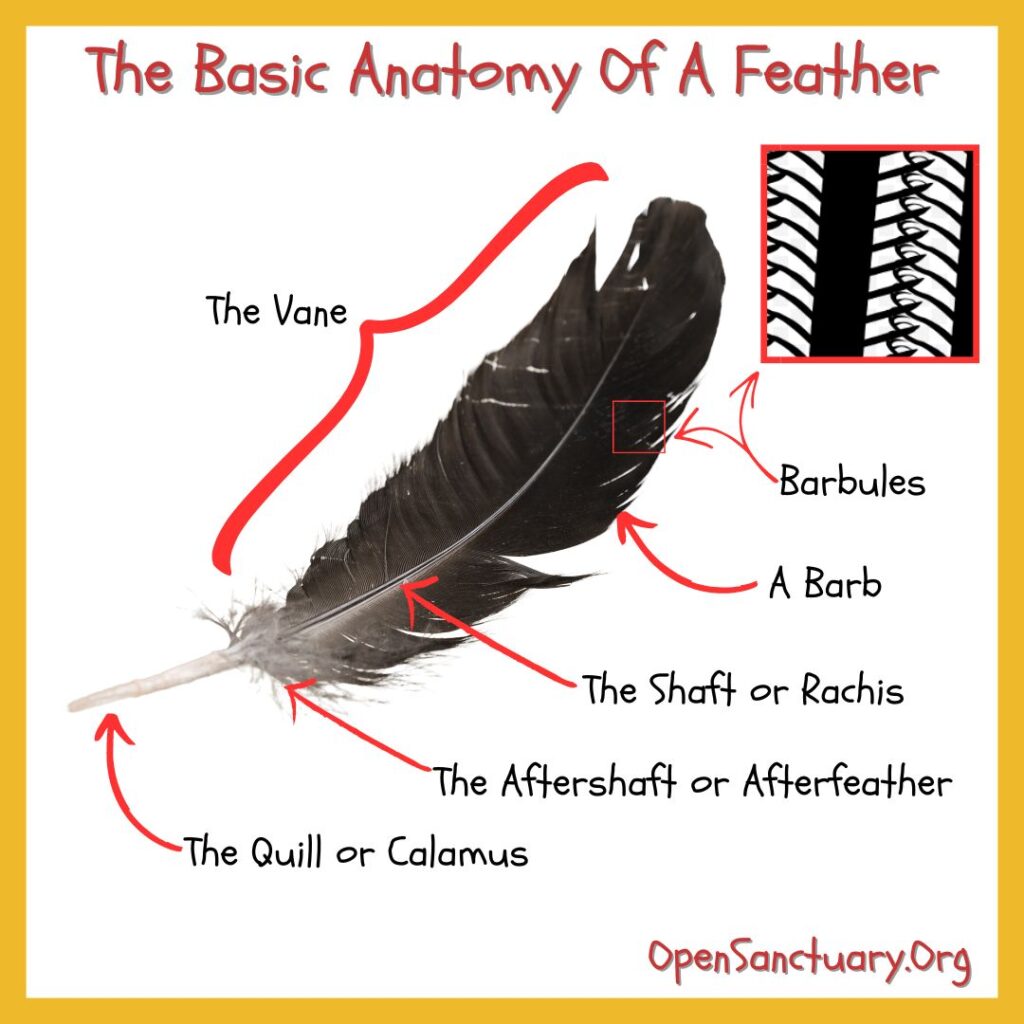
The feather above has a downy portion (the aftershaft or afterfeather) and a flat and stiff portion. Let’s talk about both flat feathers and downy feathers generally before moving on to how feathers are organized on a bird’s body.
Feathers that are largely stiff and flat, like the one pictured above, are known as pennaceous feathers and are generally found on the outside of a bird’s coat of feathers, particularly on the wings and tail. On these types of feathers, hooks on barbules closely interlock, creating a stiff structure that allows birds to fly and creates a waterproof barrier.
Certain Breeds Of Birds Have Different Feather Structures That Require Special Care!
Breeds like silkie chickens have more hair-like feathers because they lack barbules, which means that they are not waterproof at all and require special care and climate control, especially in cold temperatures. Sebastopol geeseUnless explicitly mentioned, we are referring to domesticated goose breeds, not wild geese, who may have unique needs not covered by this resource. also may not have flat pennaceous feathers but instead, have curly or “frizzled” feathers. Humans have also bred other breeds of birds including silkies and other types to have “frizzled” feathers. These kinds of birds also require special care when it comes to climate control, and caregivers should pay attention to them closely to make sure that they do not develop feather cysts (which are akin to an ingrown hair on a human). If a bird is the offspring of two frizzled parents, they have been referred to as “frazzles,” and they often develop feather cysts and have other issues with molts (which will be discussed further below).
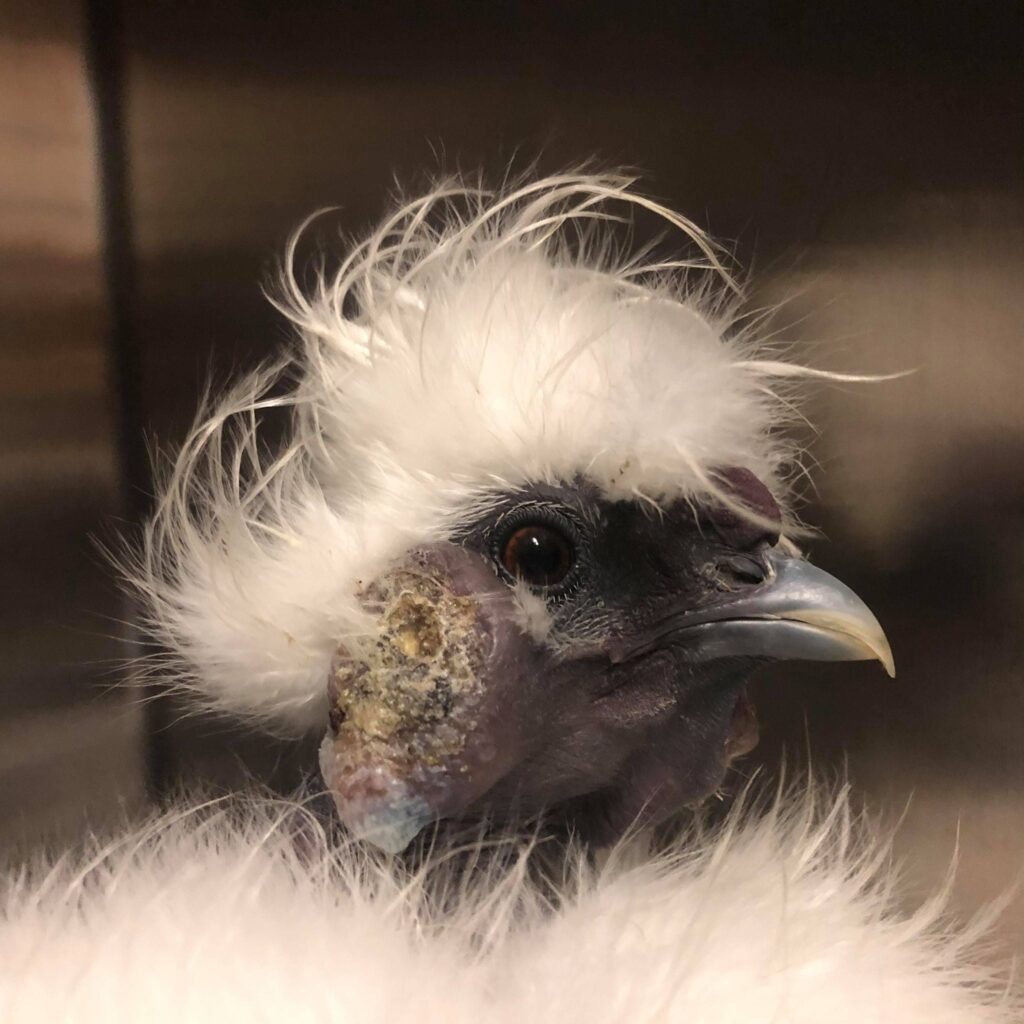
Other feathers, especially the under plumage on a bird’s body, are mostly downy. The structure of these soft and fluffy feathers is a function of their barbs either lacking barbules entirely or the barbules being more flexible and loosely organized. These feathers are known as plumulaceous feathers, and their purpose is primarily to trap air near a bird’s body to help insulate them. Some species of birds may pluck their own down feathers when they are broodyTerm used to describe a hen demonstrating behavioral tendencies associated with sitting on, incubating, and protecting a clutch of eggs, but a hen can be broody even if her eggs are removed., building nests, incubating eggs, and hatching chicks to keep the nest nice and warm. Also, chicks of some species of birds (like chickens, turkeysUnless explicitly mentioned, we are referring to domesticated turkey breeds, not wild turkeys, who may have unique needs not covered by this resource., ducksUnless explicitly mentioned, we are referring to domesticated duck breeds, not wild ducks, who may have unique needs not covered by this resource., and geese) may be hatched covered in down! Others, like parrots or songbirds, may be totally naked on hatch.

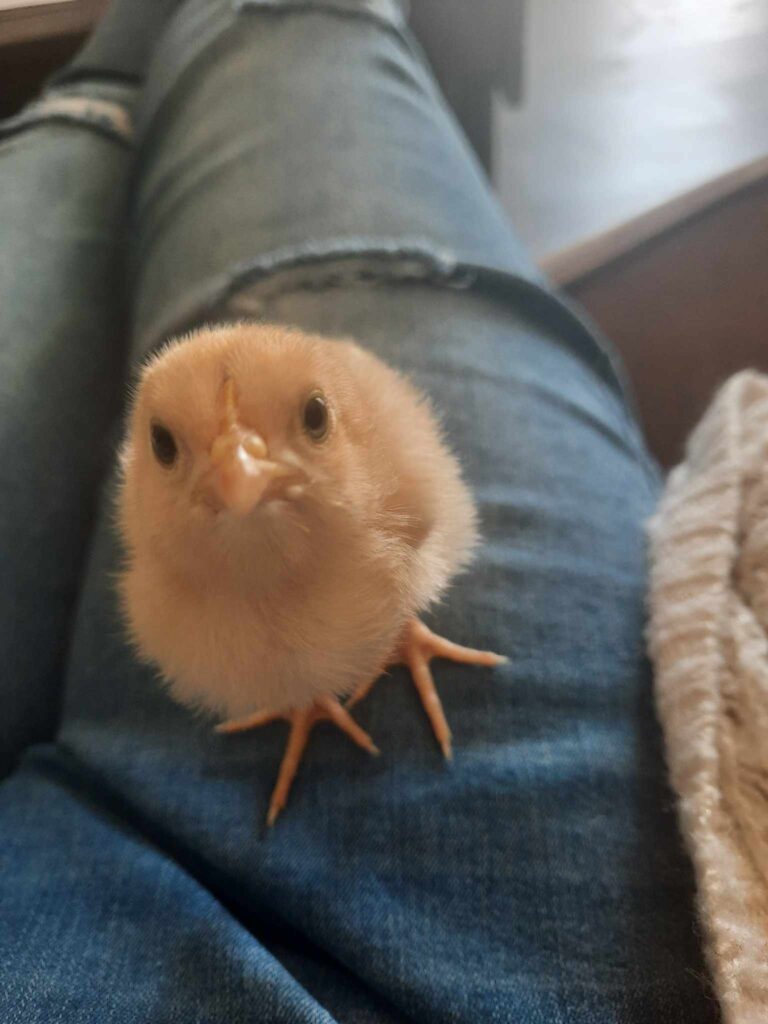
How Feathers Are Organized On A Bird’s Body
All feathers on a bird can be pennaceous or plumulaceous, but some may have attributes of both, as shown in our diagram above. What type they are is largely determined by where they fall on the bird’s body and the purpose they serve for the bird.
Wing feathers on flighted birds are pennaceous, flat and characterized by barbs that have tightly interlocking barbules, creating a wind and weatherproof structure. They tend to be asymmetrical, with one thinner edge operating as the flight edge.
Tail feathers are also pennaceous and are similar to wing feathers in how they interlock, but they are more symmetrical and are generally fan-shaped. In flighted birds, their purpose is to help in steering. However, in birds like peafowl, tails have evolved for an entirely different purpose! They are used for elaborate courtship displays and serve no purpose in flight.
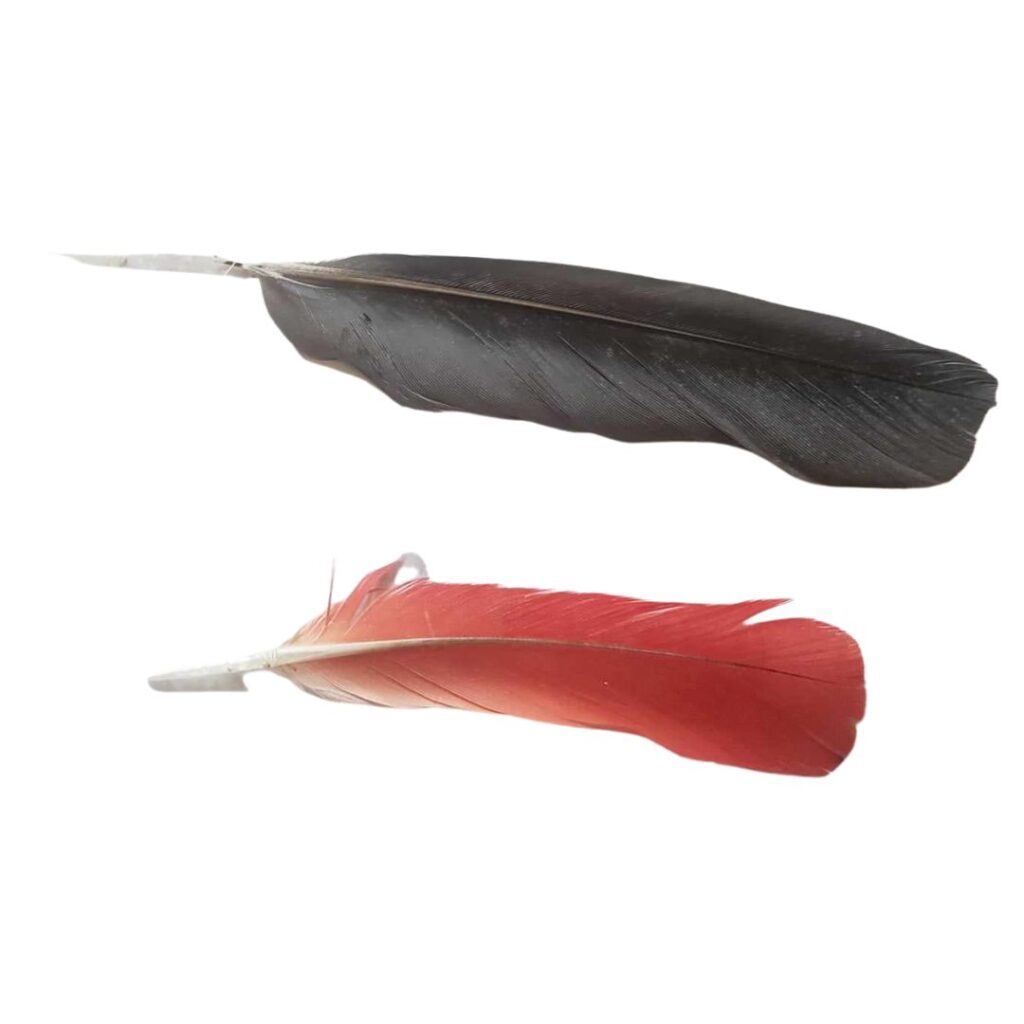
Contour feathers cover a bird’s chest and back. They frequently have downy bases and tips with closely interlocking barbules, which offer the bird a combination of insulation and waterproofing, so they combine pennaceous and plumulaceous qualities. You will also find contour feathers on the leading edges of birds’ wings closer to a bird’s body. These are known as covert feathers.
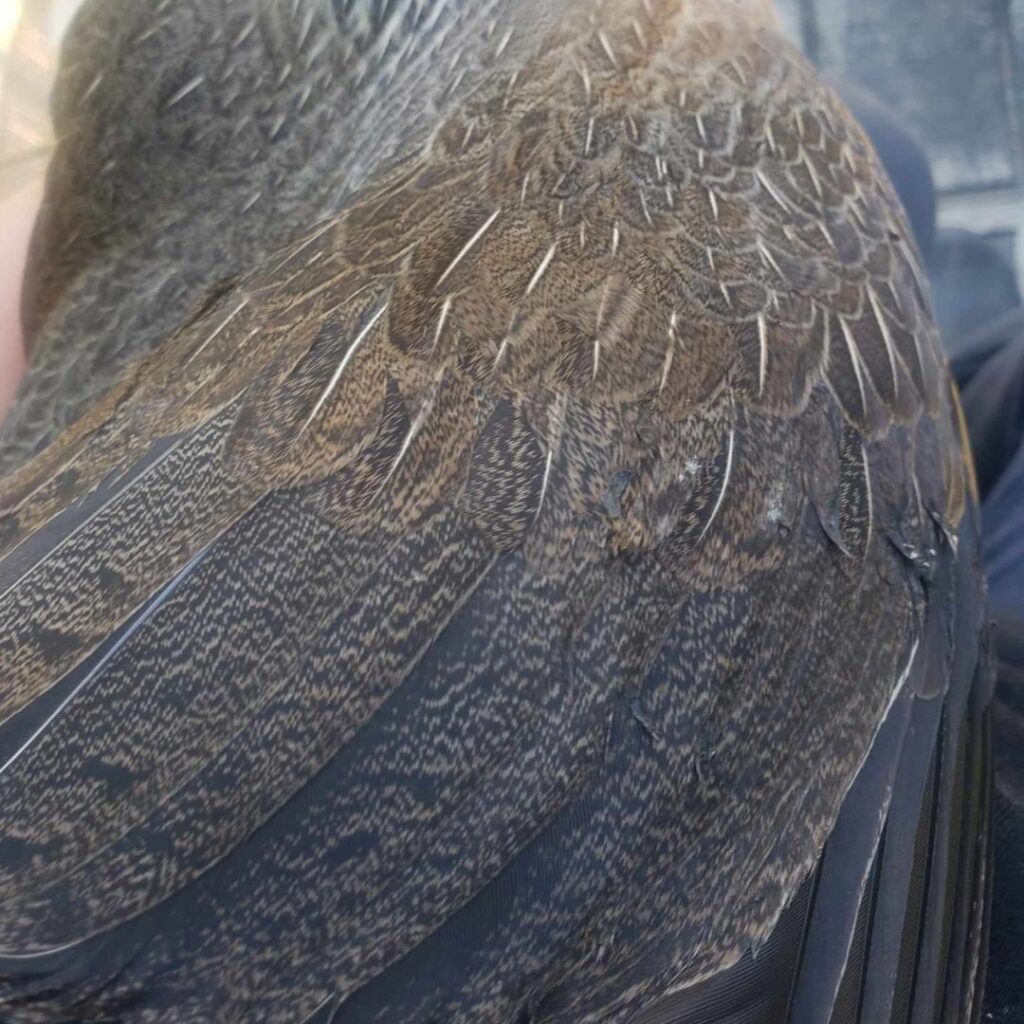
Now to the plumulaceous feathers! Semiplume feathers are not usually visible without searching behind other body feathers. Their barbules tend to lack hooks, except at the very tips, which make them fluffier and help insulate a bird.
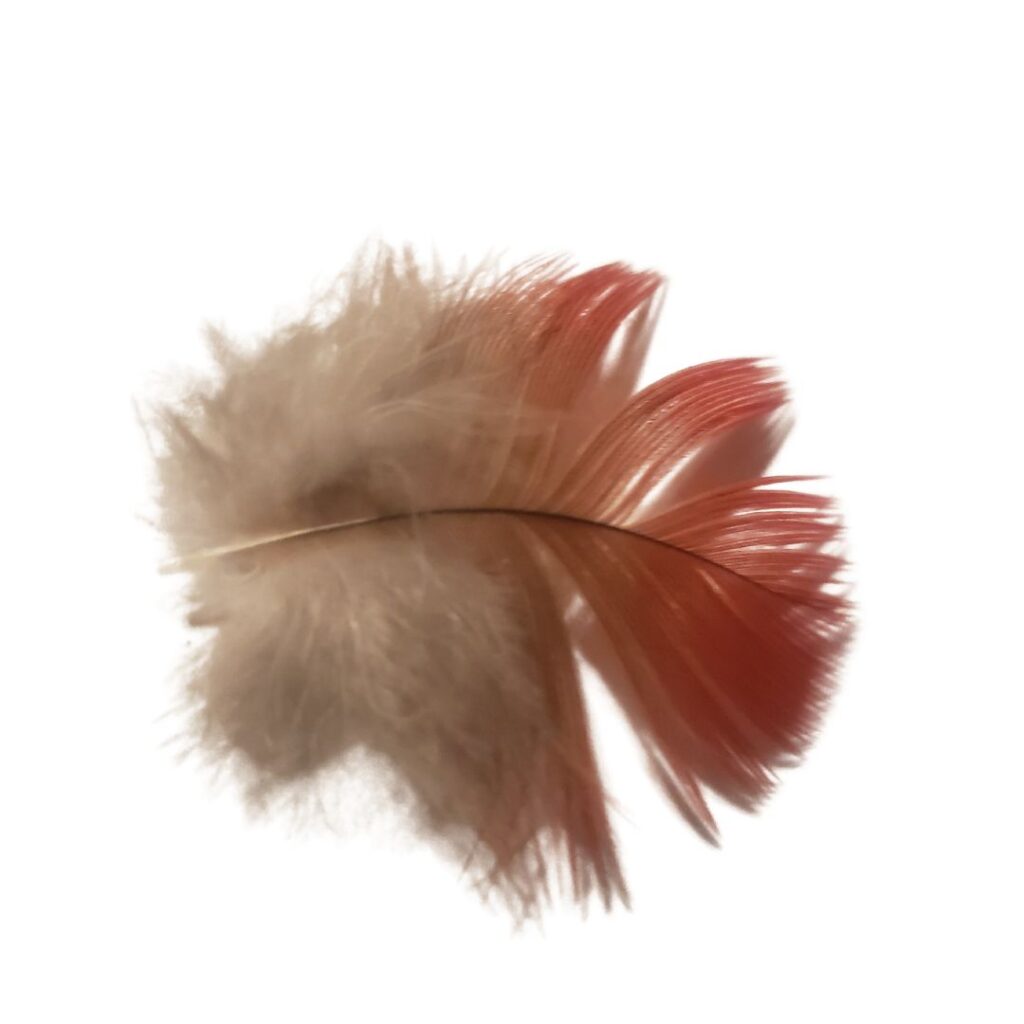
“Down” to the final layer of feathers! These are…down feathers! We shared an image of a down feather above. They are very similar to semiplumes but are located even closer to the bird’s body, right against the skin, and they have an even looser structure designed to trap as much heat as possible.
A Note On Powder Down Feathers
Certain birds, which include cockatoos, pigeons, African Grey parrots, Amazons, some herons, bustards, and a few others, have a special kind of down feather, known as “pulviplumes,” or “powder down” feathers. Powder down feathers are found near a bird’s skin and do not molt but continuously grow. The tips of these feathers disintegrate into a fine keratin powder, which birds then use to preen and weatherproof their other feathers. Birds with powder down feathers may create more dust and may cause more allergic reactions in folks who are sensitive to birds, so it is always important to consider this carefully if you are thinking about taking in such birds as residents at your sanctuary. You will also want to take special considerations in the living spaces of such birds to mitigate any additional dust caused by powder down, which may include using air filtration devices and doing more frequent cleaning! In enclosed spaces, accumulated powder can cause the birds respiratory distress if not properly cleaned!
Finally, let’s look at two more kinds of feathers: filoplumes and bristles. Filoplumes are found all over a bird’s body, are very short and only have a few barbs at the tip, but are speculated to operate similarly to whiskers in mammals. They’re not often visible, so we don’t have an image of one to show you, but you can check out this article for an illustration. Also, the role of filoplumes is still pretty unclear to scientists. Research suggests that they may be connected to nerve receptors that help birds monitor changes to their feathers and that they serve a role in helping birds replace damaged or missing feathers.
Bristle feathers are even simpler than filoplumes and may only consist of the rachis, or feather shaft. You might find these on the heads of birds, and they’re usually there to help protect the bird’s eyes and face.

A Note On Feathers And Health Checks
Now that we’ve gone through each layer of a bird’s feather coat, it’s important to note that when you’re doing a health checkThe Open Sanctuary Project uses the term "health check" to describe health evaluations performed by caregivers who are not licensed veterinarians. While regular health checks are an important part of animal care, they are not meant to be a replacement for a physical exam performed by a licensed veterinarian. on an avian resident, or investigating a possible injury, be sure check under all of the feather layers! Without a careful check it can be easy to miss a wound or injury that is hiding beneath the many layers of a bird’s feather coat! While feathers can be an important indicator of your avian resident’s health, they can also hide things!
Molting
Now that we’ve talked about basic feather anatomy and the different types of feathers you can find on a bird let’s talk about the feather “life cycle,” or molting. All birds grow, lose, and regenerate their feathers. The shedding and regrowing of feathers is referred to as molting. Molting can be a constant process, with birds shedding some feathers and replacing them throughout the year, and thus may go largely unnoticed by caregivers. Or, birds may go through heavy molting seasonally, sometimes losing an abundance of feathers overnight! This can be a shock to a caregiverSomeone who provides daily care, specifically for animal residents at an animal sanctuary, shelter, or rescue. who is unfamiliar with molting. This can happen with many domesticatedAdapted over time (as by selective breeding) from a wild or natural state to life in close association with and to the benefit of humans birds like chickens and turkeys. Many caregivers note that birds go through some molting in spring and then a dramatic molt in autumn. One helpful tip for caregivers trying to understand sudden feather loss is that many (but not all) birds will tend to molt symmetrically, which can help caregivers figure out if sudden feather loss is due to molting, or another cause.
A Note On Suprelorin Implants And Molting
For caregivers of avian residents who receive Suprelorin implants to mitigate the effects of egg production, please note that it is common for birds who have just been implanted to undergo a significant molt. To learn more about Suprelorin implants and how they can help your egg-laying residents, check out our resource here!
In other kinds of birds, particularly captive parrots, molting patterns can vary significantly, depending on the light levels and temperature changes they experience. It is important for caregivers to remember that every avian resident is an individual and will have a different molt pattern. Careful observation and recordkeeping can help you become familiar with the normal molting patterns of your residents, so you can identify quickly if something seems to have changed.
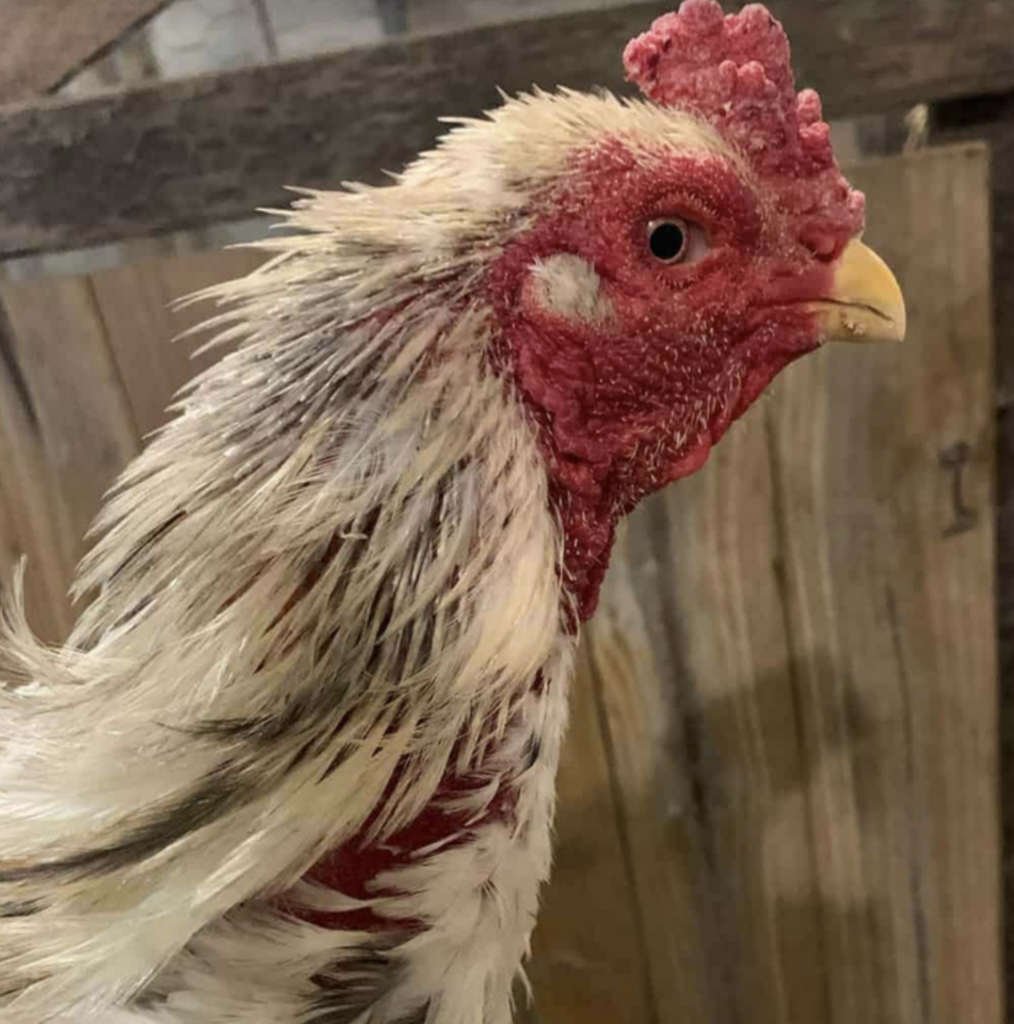
Once a bird has lost a feather, you should see a new one, called a blood feather or a pin feather, appearing in the skin to replace the old one within two weeks. These new feathers have a blood supply and are covered in a protective keratin sheath. Their base should appear bluish or pink due to the presence of blood. Should they break, they will bleed profusely.
Damaged Blood Feathers Can Present An Emergency!
Because blood feathers have a blood supply delivered through a hole in the feather’s quill, they can bleed profusely if damaged or broken and should be addressed immediately. If you care for avian residents, you should consult your veterinarian on what to do should you encounter a bird with a broken blood feather before you ever encounter one, if possible! With some species, sometimes a bit of pressure and some bird-safe blood stop is enough to get the bleeding to stop. In other cases, however, the shaft of the feather may need to be removed to stop the bleeding. If your avian resident has a broken and bleeding blood feather and you are not trained by your vet on how to appropriately remove it, you should seek veterinary assistance. Even if you are trained to do this, you should see your vet afterward for any necessary follow-up, particularly if the bird has lost a lot of blood. Also, keep in mind that a bird who breaks a blood feather may be pecked by their flockmates, so special care should be taken to protect them.
As blood feathers develop, the color of the sheath will lighten, and when they are fully grown, the bird will remove the sheath by preening it off. Note that once mature, feathers do not have a blood supply, and will not present the same risk of bleeding should they happen to break.
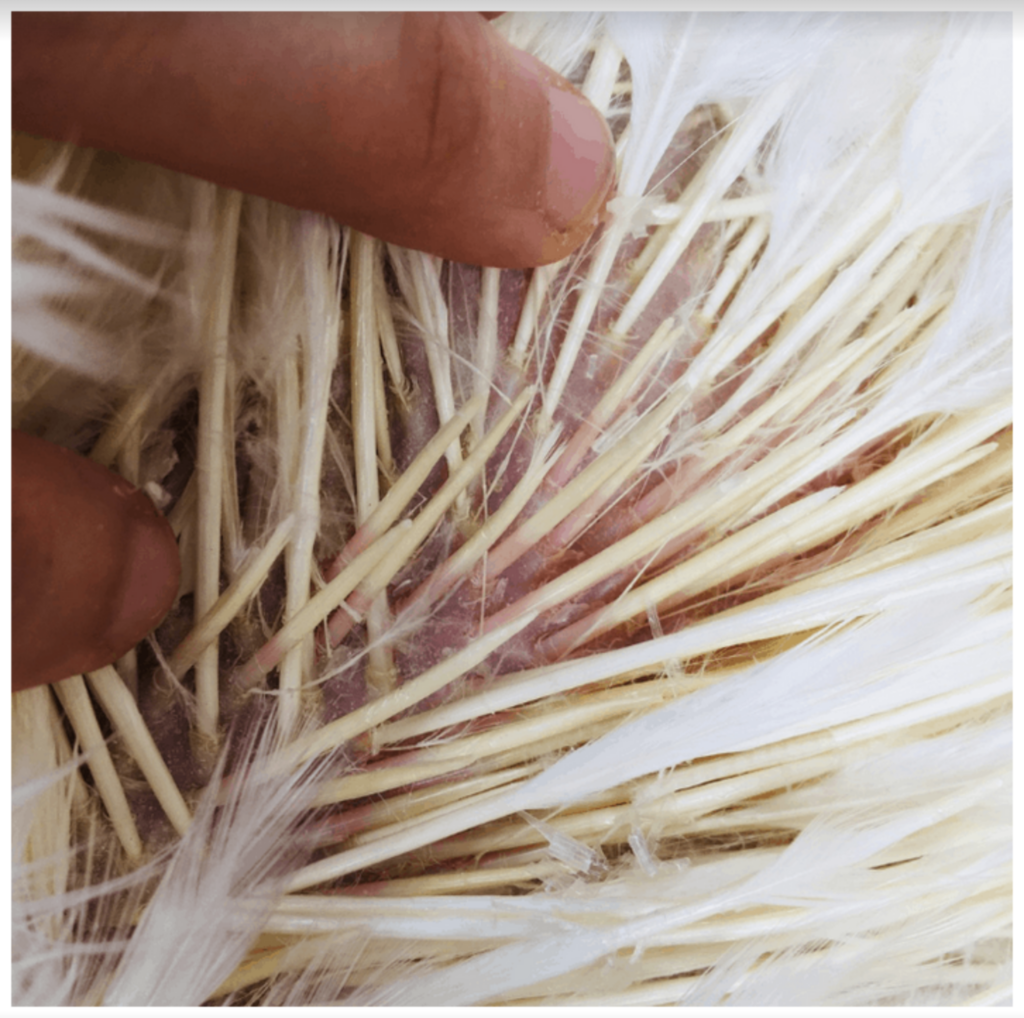
What’s preening? Birds use their dextrous tongues and beaks on their feathers to remove the protective sheaths on their new feathers once they are fully developed and clean off their existing feathers. This form of grooming is called preening. Birds spend quite a large part of their time maintaining their feathers.
Preening can also be a group activity that is satisfying and enjoyable for the flock. You can even pitch in! Birds cannot reach the pin feathers on their necks and heads, and older birds can have a hard time reaching pin feathers on their rears, so if an avian resident is willing to allow you to help, you can clean the keratin sheaths off pin feathers in these areas once they are ready to be removed. You can do this by gently rubbing them between your fingers until the keratin sheath breaks apart. Take special care towards the base of the feather, and make sure not to pull!
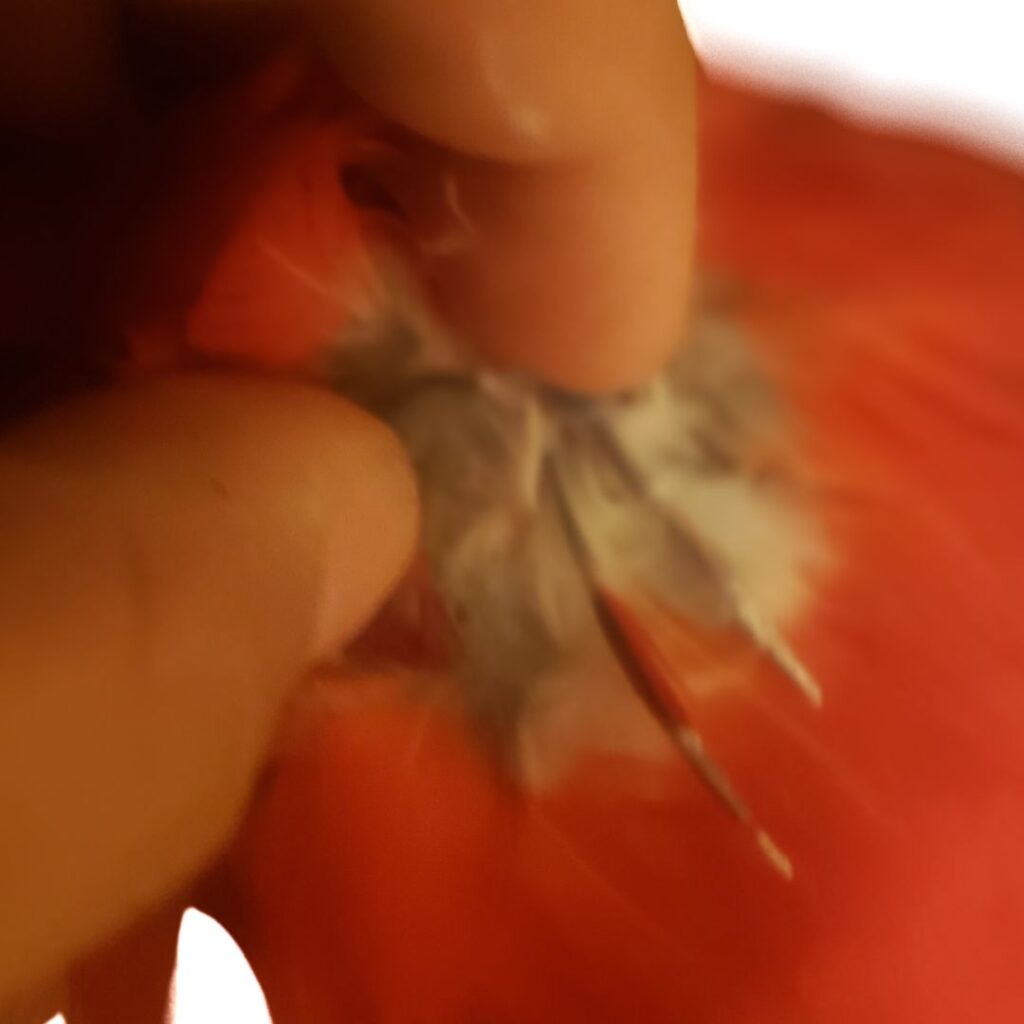
Please also note that a telltale sign of a sick bird is disinterest in preening and dirty or ragged feathers. We’ll discuss this more below, but any resident showing these signs should receive veterinary attention as soon as possible.
Molting is stressful for birds. They may be quieter than usual or have less tolerance for their caregivers. During times of molt, they should be watched closely for any changes that indicate health conditions and offered extra supportive care. This includes:
- Encouraging bathing by offering the bird opportunities to bathe the way they like best. For chickens and turkeys, this may involve offering additional dirt bathing areas. For waterfowl, it may involve extra opportunities to swim. For parrot residents, it could involve misting the bird with a spray bottle, letting them use your shower, offering them a dish large enough to bathe in, or offering wet greens to play with.
- If a bird has lost many feathers during their molt in cold temperatures, consider turning up the thermostat or providing safe supplemental heat to prevent chilling.
- Remove as many sources of stress as possible.
- Talk to your veterinarian about diet, and make sure the diet you are offering is as nutritious as possible. Ask about offering dietary supplementation during molts.
- If you must handle molting birds, do so very gently and carefully, as pin feathers are very uncomfortable to them!
A Note On Bathing Birds!
Unless an avian resident is very dirty or has gotten into something toxic or oily, soap should never be used to bathe birds, and you should ask your veterinarian before using anything other than water to bathe a bird. Soap and other cleaners can damage the waterproof quality of feathers.
Once molting is complete, old shed feathers should have been entirely replaced by new ones, which should remain until the next molt. If a bird’s feathers become broken or damaged, they will not be replaced until the new molt.
What Should You Do With Molted Feathers?
Bird feathers have been commodified in many ways, from using down in human clothing, pillows and comforters, to using feathers in fishing lures or fashion. While it may seem innocent enough to sell residents’ molted feathers, or objects made from them to fundraise for your animal organization, it can send the message that animals and their bodies are products for human use, something sanctuaries try hard to avoid. We know sanctuaries are trying to do their best for their residents and learning every day! (We are too!) Because of this, we wrote a resource about how to avoid direct and indirect harm in a sanctuary environment. Check it out here. We also have multiple resources on alternative ways to fundraise!
What Can Feathers Tell You About Your Avian Residents?
Now that you know about feather anatomy and molting, let’s talk about how feathers can help you as a caregiver. Feathers can give you lots of information about your residents. Birds may use their feathers to communicate with you directly, or their feathers can show telltale signs of health conditions or other situations you should be aware of and may need to address!
Using Feathers To Distinguish Males From Females
In some species of birds, feather appearance can be used to distinguish males and females! For example, in peafowl, the differences between males and females are pronounced, with males sporting spectacular tail feathers and bright blue and green feathers. In contrast, females have much more subtle, camouflaged feathering. The differences may or may not be as immediately apparent in other species, like chickens. To learn about the differences in feathering between roosters and hens, you can see our resource here!
However, in other species, like most pigeons, for example, feathering in males and females is virtually identical to the eye, so visual differences cannot be used to distinguish males from females. Though in such cases, caregivers can often get feather samples analyzed by a lab to figure out a bird’s sex!
Feathers As A Means Of Communication
Birds can control their feather positioning to regulate their temperature, but they can also use their ability to move their feathers to do even more, including communicating! Most people think of bird communication as consisting of sound, but they also have body language. Feather displays are frequently seen in courting and mating. Birds also use their feathers in other ways to communicate with each other and with their caregivers!
Feather position can indicate many things about a bird’s attitude or mood. For example, cockatoos lift and flare their crests to indicate excitement. Roosters will flare their hackle feathers when defending themselves from a threat, and pigeons will use their wings to “clap” or “whistle” to warn their flock members of potential threats!
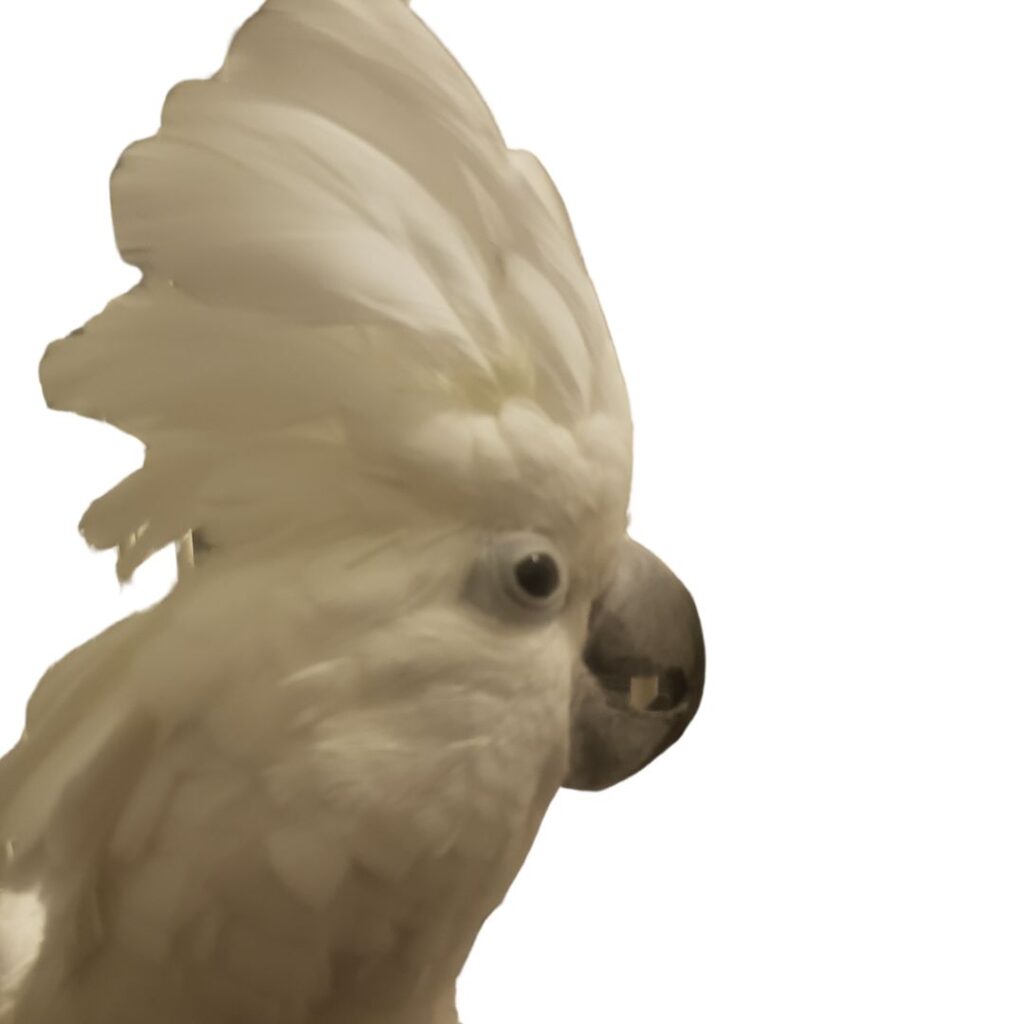
One fairly universal bit of “feather language” among birds is when a bird crouches and ruffles their feathers. This is generally a sign of discomfort, illness, or even being too cold. If a bird persistently shows this kind of body language, take them to the vet to get an examination!
Observation of your avian residents will help key you into each individual’s unique use of feathers to communicate with you. Learning these behaviors can be very helpful when interacting with and handling birds!
Feathers As Health Alerts
Observing your avian residents’ feathers can also tell you much more than their mood. As mentioned above, a crouched and ruffled bird is often communicating discomfort. But in addition to this body language, the quality and condition of a bird’s feathers are a key source of information about their health and flock dynamics!
As mentioned above, birds spend significant time preening – cleaning and waterproofing their feathers. A telltale sign of a resident in poor health is a bird who has stopped preening and is allowing their feathers to dirty or deteriorate. Any bird in poor feather should be seen by a qualified avian veterinarian as soon as possible, so they can run diagnostics like blood and fecal testing to determine the cause.
On the other side of the preening spectrum, sometimes parrots specifically can get carried away with preening, which can sadly lead to self-destructive behaviors. Self-destructive behavior in parrots is a frustrating and challenging problem to address. We will be publishing a full resource on the subject in the future, but for now, please note if you note any sign of over-preening, feather chewing, feather plucking, or self-mutilation in parrots, you should immediately seek treatment for the bird from a qualified avian veterinarian.
Aside from parrots, any bird suddenly displaying missing or damaged feathers should be checked closely, especially in a flock environment. If the bird is not molting, there can be many causes for this, all of which warrant immediate caregiver attention and possibly a trip to the vet. Consider the following examples:
- Penny Hen is showing patches of missing feathers on her back and head. It’s springtime, and her rooster friend, Charles, feels the full flush of spring hormones. The missing feathers on her back and head may be a sign that Charles heavily favors her as a mate. This warrants concern because an enthusiastic rooster can, at times, inadvertently injure a hen. Penny’s caregivers should examine her closely to ensure she has not suffered an injury and may wish to either closely monitor her or consider separating her temporarily to allow her feathers to recover.
- Paul Peacock has been observed scratching himself frequently, and his caregivers also notice he is preening even more than usual and seems restless. His feathers don’t seem as bright as usual. When they check him out up close, they see lice teeming on his feathers! They treat him for external parasites and make him a vet appointment so he can have bloodwork done to check him for anemiaAnemia is a condition in which you don't have enough healthy red blood cells to carry adequate oxygen to the body's tissues. and other issues. All birds who were in proximity to Paul are also checked and treated.
- Frieda TurkeyUnless explicitly mentioned, we are referring to domesticated turkey breeds, not wild turkeys, who may have unique needs not covered by this resource. lives in a flock of turkey hens, and her caregivers notice that she suddenly has missing feathers and bare patches, even though she is not molting. On observation, they note that she is being picked on by her flockmates, who are pulling and eating her feathers! It’s time to do two things! First, they should take Frieda to the vet to ensure that she has no underlying health conditions that make her flockmates want to bully her. Second, they should revisit the diet they are providing their turkeys with their vets to ensure they are providing them with sufficient protein!
Conclusion
Feathers are essential for birds, serving many different purposes. But from a sanctuary perspective, feathers are a critical source of information! Feathers can help give caregivers essential insights into their avian residents’ moods, flock dynamics and general health! We hope that this resource has offered you a helpful introduction to the complexities of feathers and that you can use them as another metric to assess the ongoing well-being of your avian residents.
SOURCES:
Observation: An Important Caregiving Tool | The Open Sanctuary Project
Suprelorin Implants | The Open Sanctuary Project
Observation: An Important Caregiving Tool | The Open Sanctuary Project
Excerpts From The Compassionate Care Classroom: Distinguishing Hens From Roosters | The Open Sanctuary Project
Peafowl: How We Got Here | The Open Sanctuary Project
Pigeons: How We Got Here | The Open Sanctuary Project
Understanding Veterinary Diagnostics: Blood Work | The Open Sanctuary Project
Understanding Veterinary Diagnostics: Fecal Testing | The Open Sanctuary Project
Avian Medicine: A Guide For Practitioners, Second Edition | Dr. Peter Sakas, D.V.M.
Basic Bird Health Care | Dr. Peter Sakas, D.V.M. & Niles Animal Hospital And Bird Medical Center
Everything You Need To Know About Feathers | The Cornell Lab Bird Academy
Feathers: Are Down And Powder Down The Same? | Similar But Different In The Animal Kingdom
The Most Mysterious Feather: Filoplumes | The Cornell Lab: All About Birds








